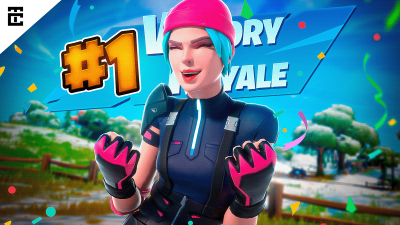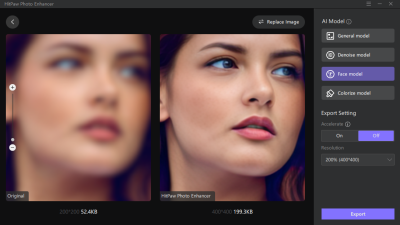When it comes to showcasing your graphic design work on Dribbble, the first impression is everything. Your project shots are the gateway to attracting attention from potential clients and collaborators. Here are some tips to help you create eye-catching project shots that stand out:
- Use High-Quality Images: Always upload clean, high-resolution images of your work. Blurry or pixelated images can send the wrong message about your professionalism.
- Focus on the Detail: Highlight the unique aspects of your design. Consider creating multiple shots to show different angles, close-ups, or how the design fits into real-world applications.
- Choose the Right Environment: Use mockups or backgrounds that complement your design. The right setting can enhance your work and provide context.
- Add Meaningful Descriptions: Accompany your shots with brief descriptions. Explain your design process, the problem you solved, or the tools you used. This provides depth to your visuals.
- Experiment Thoughtfully: Don’t hesitate to try different layouts or styles in your project shots. Variety can keep your portfolio fresh and engaging.
Remember, the goal is to make viewers feel compelled to “like” or comment on your work. An eye-catching shot can lead to higher engagement and even open doors to exciting opportunities in the design world.
Best Practices for Engaging with the Dribbble Community
The Dribbble community is not just about showcasing your work—it’s also about building relationships and engaging with other designers. Here are some best practices for getting the most out of your Dribbble experience:
- Be Active: Regularly update your profile with new work. Aim to post at least once a week to keep your presence alive and visible.
- Comment and Give Feedback: Take the time to comment on others’ projects. Provide constructive feedback and express your admiration where due. This fosters a sense of community.
- Participate in Challenges: Join Dribbble’s design challenges for a chance to showcase your talents in unique ways. It’s a great way to get noticed and connect with fellow designers.
- Utilize Tags Wisely: Use relevant tags to categorize your work. This helps others find your projects more easily and can lead to increased exposure.
- Network Ethically: Engage with other designers genuinely. Avoid spamming your work or overly promoting yourself. Authentic interactions tend to yield better responses and connections.
By following these practices, you can cultivate a meaningful presence within the Dribbble community, leading to greater recognition and opportunities in your graphic design journey.
Case Studies of Successful Designers on Dribbble
Dribbble has become a launching pad for countless designers looking to showcase their work and connect with potential clients. Let’s look at a few inspiring case studies of successful designers who’ve navigated Dribbble effectively: 1. Matt Wiegle – Known for his whimsical illustrations and bold colors, Matt has harnessed Dribbble to build a vibrant community of followers. By sharing not just completed projects but also “work in progress” shots, he has engaged potential clients through transparency and creativity. 2. Sarah Parmenter – Sarah’s journey on Dribbble has been remarkable. She transforms complex UI designs into clean, user-friendly visuals. Her case reveals the importance of consistency in style. By maintaining a cohesive aesthetic, she has garnered a loyal following and attracted freelance opportunities. 3. Adham Dannaway – Adham effectively leverages Dribbble to showcase his UI/UX design skills. He combines compelling visuals with storytelling. By explaining the thought process behind each design, he not only showcases his skill but also engages viewers on a deeper level, making his work memorable. Takeaways:
- Be authentic and showcase your unique style.
- Engage your audience with behind-the-scenes insights.
- Maintain a consistent aesthetic to cultivate recognition.
These designers exemplify how, with passion and strategic sharing, Dribbble can transform a portfolio into a thriving career.
Common Mistakes to Avoid While Using Dribbble
While Dribbble is an excellent platform for graphic designers, avoiding certain pitfalls can maximize your effectiveness. Here are some common mistakes to steer clear of: 1. Inconsistent Branding – Your Dribbble page should reflect your personal brand. Inconsistency in style, colors, or topics can confuse potential clients. Always align your uploads with your unique voice. 2. Poor Image Quality – Always upload high-resolution images. Low-quality visuals can misrepresent your skills. Remember, first impressions matter—ensure your work shines! 3. Neglecting Engagement – Dribbble is not just about showcasing your work; it’s a community. Failing to interact with other designers or potential clients can limit your reach. Make time to comment, like, and share others’ work! 4. Overloading Your Page – Don’t upload every piece of work you’ve ever done. It’s vital to curate your portfolio. Focus on your best and most relevant designs to make a lasting impression. 5. Ignoring Feedback – If users leave comments or ask questions, acknowledge them! Engaging with your audience shows that you value their input which can lead to new opportunities. 6. Not Using Tags Effectively – Tags help categorize your work. Use relevant keywords to enhance discoverability. Avoid generic tags; instead, choose specific descriptors related to your project. By steering clear of these common missteps, you’ll position yourself for success on Dribbble, increasing your chances of connection and growth within the design community.
How to Use Dribbble to Showcase Your Graphic Design Work
Dribbble is an invaluable platform for graphic designers to showcase their work, connect with other creatives, and gain exposure in the design community. Here’s how you can effectively use Dribbble to present and promote your graphic design projects.
1. Create a Captivating Profile
Your Dribbble profile is your digital business card. It should accurately represent your style and expertise. Ensure you:
- Choose a professional username that reflects your brand.
- Add a high-quality profile picture to build recognition.
- Write a compelling bio that highlights your skills and experience.
2. Showcase Your Best Work
Focus on quality over quantity when it comes to your portfolio. Here are some tips:
- Select your top projects that best represent your design skills.
- Use high-resolution images to ensure your work stands out.
- Consider including animations or videos to bring your designs to life.
3. Engage with the Community
Dribbble is not just about posting your work; it’s also about interaction. To strengthen your profile:
- Like and comment on other designers’ work.
- Follow designers whose work inspires you.
- Join groups and participate in discussions.
4. Utilize Tags and Keywords
Make your work discoverable by adding relevant tags and keywords. Consider:
| Type of Tag | Examples |
|---|---|
| Skill-based | Illustration, UI/UX, Branding |
| Project Type | LogoDesign, WebDesign, MobileApp |
| Style/Theme | Minimalist, Vintage, Modern |
5. Collect Feedback
Encouraging feedback from others can help you improve your designs. Don’t hesitate to:
- Ask specific questions about your work.
- Be open to constructive criticism.
- Engage with comments on your posts to build rapport.
Conclusion and Next Steps for Aspiring Designers
Utilizing Dribbble effectively requires a commitment to continually updating your profile, engaging with the community, and showcasing your best work. By following these steps, you’ll not only enhance your visibility but also develop valuable connections that can propel your graphic design career forward. Start sharing your creativity today and be an active participant in the vibrant world of design on Dribbble!



